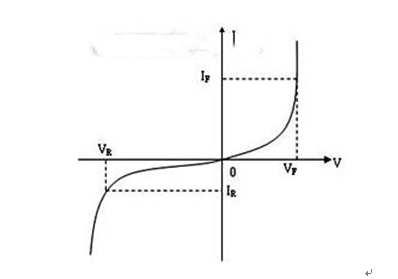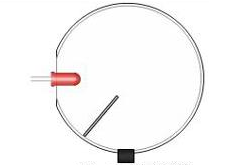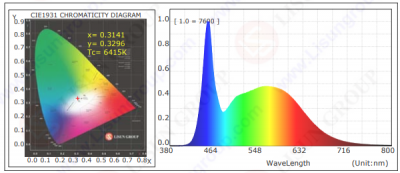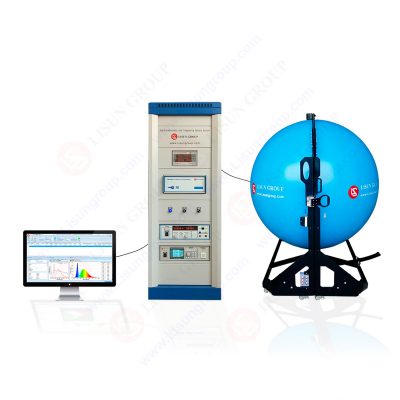What is the LED test standard?
Semiconductor light-emitting diode (LED) is a new type of light-emitting body, with high electro-optical efficiency, small size, long life, low voltage, energy saving and environmental protection, it is an ideal lighting device for the next generation. LED photoelectric test is an important and only means to test LED photoelectric performance, and the corresponding test results are the basis for evaluating and reflecting the current development level of LED industry in my country. The development of standards for LED optoelectronic testing methods is an important way to uniformly measure the optoelectronic properties of LED products, and it is the premise that the test results truly reflect the development level of my country’s LED industry. Combined with the latest national standard of LED test method, this paper introduces several main aspects of LED photoelectric performance test.
1. Introduction
Semiconductor light-emitting diodes (LEDs) have been widely used in indicator lights, signal lights, instrument displays, mobile phone backlights, vehicle light sources and other occasions, especially with the development of white LED technology, LEDs have become more and more widely used in the field of lighting. However, in the past, there were no comprehensive national standards and industry standards for LED testing. In production practice, only relative parameters were used as the basis. Different manufacturers, users and research institutions had a lot of disputes on this, which led to the serious influence on development of the domestic LED industry. Therefore, the national standard for testing methods of semiconductor light-emitting diodes came into being.
2. LED test method
Based on the actual needs of various LED application fields, LED testing needs to include many aspects, including: electrical characteristics, optical characteristics, switching characteristics, color characteristics, thermal characteristics, reliability and so on.
2.1 Electrical Characteristics
LED is a unipolar PN junction diode composed of semiconductor inorganic materials, which is a kind of semiconductor PN junction diode, and the relationship between its voltage and current is called volt-ampere characteristic. It can be seen from below picture that the LED electrical characteristic parameters include forward current, forward voltage, reverse current and reverse voltage. The LED must be driven by a suitable current and voltage to work normally. Through the test of LED electrical characteristics, the maximum allowable forward voltage, forward current and reverse voltage and current of the LED can be obtained, and the optimal working electrical power of the LED can also be determined.

LED volt-ampere characteristic curve
The test of the electrical characteristics of the LED is generally carried out with a voltage and ammeter under the power supply of the corresponding constant current and constant voltage source.
2.2 Optical characteristics
Similar to other light sources, the test of LED light characteristics mainly includes luminous flux and luminous efficiency, radiant flux and radiation efficiency, light intensity and light intensity distribution characteristics and spectral parameters.
(1) Luminous flux and light efficiency
There are two methods for luminous flux testing, integrating sphere method and variable angle photometer method. The variable-angle photometer method is the most accurate method to test the luminous flux, but because it takes a long time, the integrating sphere method is generally used to test the luminous flux. As shown in below picture, there are two test structures for measuring LED luminous flux by the existing integrating sphere method.

Full solid angle test

2兀 solid angle test
In addition, the self-absorption of light by the light source will affect the test results when the luminous flux is measured by the integrating sphere method. Therefore, auxiliary lights are often introduced, as shown in the figure below.

Auxiliary lamp method to eliminate self-absorption effect
After measuring the luminous flux, the luminous efficiency of the LED can be measured with the electrical parameter tester. The test methods of radiant flux and radiant efficiency are similar to those of luminous flux and luminous efficiency.
(2) Light intensity and light intensity distribution characteristics

Point light test

LED light intensity test
As shown in the figure below, the light intensity of the point light source is uniformly distributed in all directions in space, and the test results received by detectors with different receiving apertures at different distances will not change. However, due to the inconsistent light intensity distribution of LEDs, the test results vary. Test distance and detector aperture variation. Therefore, CIE-127 proposes two recommended test conditions so that each LED can be tested and evaluated for light intensity under the same conditions. At present, the CIE-127 conditions have been cited by various LED manufacturers and testing agencies.

CIE-127 Recommended LED Light Intensity Test Conditions
(3) Spectral parameters
The spectral characteristic parameters of LED mainly include peak emission wavelength, spectral radiation bandwidth and spectral power distribution. The spectrum of a monochromatic LED is a single peak, and its characteristics are expressed in terms of peak wavelength and bandwidth, while the spectrum of a white LED is composed of multiple monochromatic spectra. The spectral characteristics of all LEDs can be represented by the spectral power distribution, and the chromaticity parameters can also be calculated from the spectral power distribution of the LEDs.
The test of spectral power distribution needs to be carried out by spectroscopic, which distinguishes each color light from the mixed light for measurement. Generally, prisms and gratings can be used to achieve light splitting.

White LED spectral power distribution
2.3 Switch characteristics
LED switching characteristics refer to the characteristics of light, electricity and color changes at the moment of power-on and power-off of the LED. Through the test of LED switching characteristics, the changing laws of the working state and material properties of the LED at the moment of switching on and off can be obtained.
2.4 Color characteristics
The color characteristics of LEDs mainly include chromaticity coordinates, dominant wavelength, color purity, color temperature and color rendering, etc. The color characteristics of LEDs are particularly important for white LEDs.
Existing color characteristic testing methods include spectrophotometry and integral method. As shown in Figure below: The spectrophotometric method is to measure the spectral power distribution of the LED through a monochromator, and then use the chromaticity weighting function to integrate to obtain the corresponding chromaticity parameters; the integration method is to use a specific color filter and a photodetector to directly measure Chromatic parameters; the accuracy of spectrophotometry is much higher than that of integration.

LED color characteristic test method

LPCE-2(LMS-9000)High Precision Spectroradiometer Integrating Sphere System
2.5 Thermal properties
The thermal characteristics of LED mainly refer to thermal resistance and junction temperature. Thermal resistance is the ratio of the temperature difference across a heat flow path to the power dissipated across the path. Junction temperature refers to the PN junction temperature of the LED. The thermal resistance and junction temperature of LEDs are important factors that affect the optoelectronic performance of LEDs.
There are generally two methods for testing the LED junction temperature: one is to measure the surface temperature of the LED chip with an infrared temperature measuring microscope or a micro thermocouple and regard it as the junction temperature of the LED, but the accuracy is not enough; The first is to determine the junction temperature of the LED by using the inverse relationship between the forward bias voltage and the junction temperature under a certain current.
2.6 Reliability
The reliability of LED includes electrostatic sensitivity characteristics, life, environmental characteristics and so on. The electrostatic sensitivity characteristic refers to the electrostatic discharge voltage that the LED can withstand. Due to the high resistivity of some LEDs and the short distance between the positive and negative electrodes, if the electrostatic charge at both ends accumulates to a certain value, this electrostatic voltage will break down the PN junction. Therefore, it is necessary to test the electrostatic sensitivity characteristics of LEDs to obtain the threshold voltage of electrostatic discharge faults of LEDs. At present, the human body mode, machine mode and device charging mode are generally used to simulate the electrostatic discharge phenomenon in real life.
In order to observe the change law of the light performance of the LED under the condition of long-term continuous use, it is necessary to conduct a sampling test of the LED, and obtain the LED life parameters through long-term observation and statistics. For the test of LED environmental characteristics, it is often used to simulate various natural invasions encountered by LED in application, generally: high and low temperature impact test, humidity cycle test, salt spray test, sand and dust test, irradiation test, vibration and Impact test, drop test, centrifugal acceleration test, etc.
3. Formulation of national standards
Summarizing the above test methods, the national standard for semiconductor light emitting diode test methods has made corresponding provisions on the electrical characteristics, optical characteristics, thermal characteristics, electrostatic characteristics and life test of LEDs. For the electrical characteristic test, the standard specifies the test block diagram of LED forward voltage, reverse voltage, and reverse current; for the luminous flux test, the standard specifies a 2π solid angle test structure; for the light intensity test, the standard cites the CIE-127 recommended conditions. In addition, the spectroscopic test, thermal characteristic test, electrostatic discharge sensitivity test, life test, etc. have been clearly specified.
4. Conclusion
The formulation of the national standard summarizes the existing LED test methods, and upgrades the scientific and applicable methods to standard test methods, which well eliminates the differences between all walks of life in the field of LED testing, and also makes the test results more truly reflect my country’s LEDs. the overall level of the industry. But in view of the continuous development of LED technology, the formulation of national standards is not done once and for all, and the latest and most suitable testing technology should be introduced into the standard at all times.
Lisun Instruments Limited was found by LISUN GROUP in 2003. LISUN quality system has been strictly certified by ISO9001:2015. As a CIE Membership, LISUN products are designed based on CIE, IEC and other international or national standards. All products passed CE certificate and authenticated by the third party lab.
Our main products are Goniophotometer, Integrating Sphere, Spectroradiometer, Surge Generator, ESD Simulator Guns, EMI Receiver, EMC Test Equipment, Electrical Safety Tester, Environmental Chamber, Temperature Chamber, Climate Chamber, Thermal Chamber, Salt Spray Test, Dust Test Chamber, Waterproof Test, RoHS Test (EDXRF), Glow Wire Test and Needle Flame Test.
Please feel free to contact us if you need any support.
Tech Dep: Service@Lisungroup.com, Cell/WhatsApp:+8615317907381
Sales Dep: Sales@Lisungroup.com, Cell/WhatsApp:+8618117273997
Your email address will not be published. Required fields are marked *